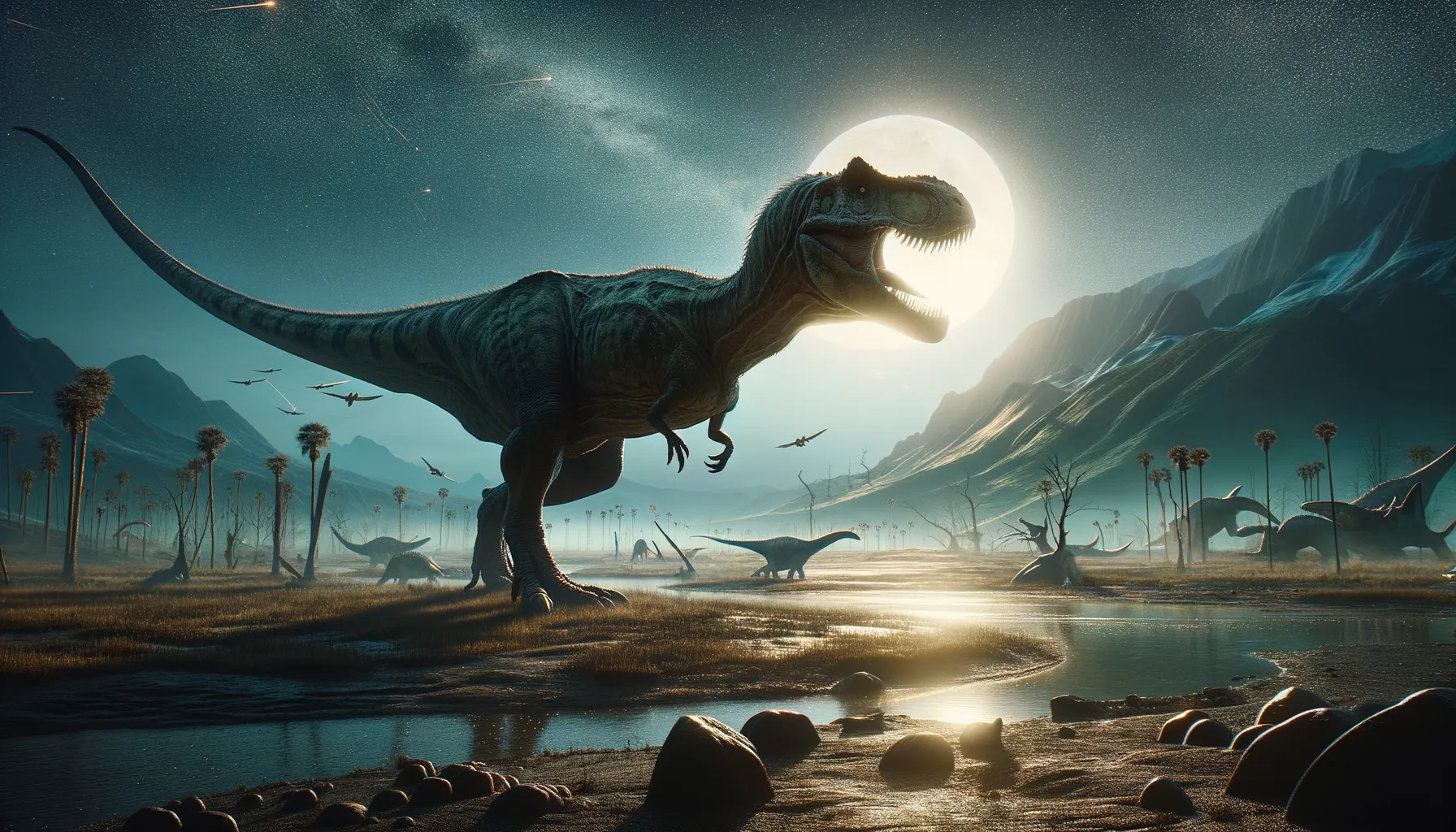
Paronychodon
Discover the enigmatic predator of the past!
Period
Cretaceous
Length
Could reach around 2 meters in length.
Height
Estimated to be around 1 meter tall.
Weight
Estimated to be fairly lightweight.
Paronychodon is a mysterious theropod dinosaur known from scattered and infrequent teeth fossils. This creature lived during the Cretaceous period, primarily known from North American finds. Because of the fragmentary fossils, much remains unknown about its exact appearance and behavior. Often hypothesized to be a small to medium-sized carnivore, Paronychodon's place in the dinosaur lineage invites curiosity and speculation.
Diet
Paronychodon likely had a carnivorous diet, primarily feeding on smaller animals and possibly scavenging. The specific dietary habits are speculative due to limited fossil evidence.
Hunting
Being a potential small predator, it might have relied on agility and speed to capture prey. The hunting strategy could have involved stalking or ambushing smaller creatures.
Environmental challenges
Paronychodon faced the challenges typical of the Cretaceous period, including competition for resources and evading larger predators. Environmental changes, such as fluctuations in climate, could have impacted its food supply. The dense foliage of the Cretaceous period could have both provided cover for hiding and obstacles for chasing prey. Limited fossil records make details about specific challenges hard to pin down.
Speed
Moderate speed for prey-catching.
Lifespan
Lifespan unknown due to limited data.
First discovery
First discovered in North America during the late 19th century.
Fun Facts
- Paronychodon is known mostly from its teeth, which are quite unique and mysterious in shape.
- These dinosaurs lived during the Late Cretaceous period, about 100 million years ago.
- Paronychodon's teeth have led scientists to believe it was likely a small carnivore.
- Despite its intriguing teeth, very few complete fossils of Paronychodon have been found, making it an enigmatic dinosaur.
- Some researchers speculate that Paronychodon might not be its own species, but rather teeth from young or variant individuals of other theropod dinosaurs.
- The name 'Paronychodon' means "beside claw tooth" due to its unusual tooth shape resembling sickle claws.
- Paronychodon's odd teeth have sparked debates among paleontologists about its diet and classification.
Growth and Development
Like many other dinosaurs, Paronychodon probably started life hatching from eggs, with juveniles requiring rapid growth to avoid predators. The growth stage is poorly understood due to lack of complete skeletal remains. Insights into its developmental stages remain largely speculative due to the fragmentary evidence.
Habitat
Paronychodon's habitat likely consisted of forested regions with plenty of prey opportunities. The environment would have been rich in flora, providing ample cover for hunting and evasion. The ecosystem varied, incorporating rivers, lakes, and varied topography typical of the Cretaceous landscape.
Interaction with other species
Its interactions with other species remain largely speculative because of the limited fossil evidence. Paronychodon may have competed with other small theropods for similar food resources. Fossil findings suggest it coexisted with a diversity of both herbivorous and carnivorous dinosaurs.
Natural lifespan
Its natural lifespan is uncertain due to lack of extensive fossil evidence.
Reproduction
Like other theropods, it likely laid eggs, but details are sparse. Nesting habits and parental care are not well-documented due to a lack of sufficient fossil evidence.
Social behaviour
Social behavior remains speculative; it might have been a solitary predator. There is no clear fossil evidence indicating pack behavior. Theories on its living arrangements primarily rely on comparable small theropods.
Fossil locations
Fossil teeth have been found primarily in North America, suggesting the habitat range. The discoverable fossils are sparse, focusing interpretation largely on dentition. Further excavations might provide expanded understanding of its distribution.
